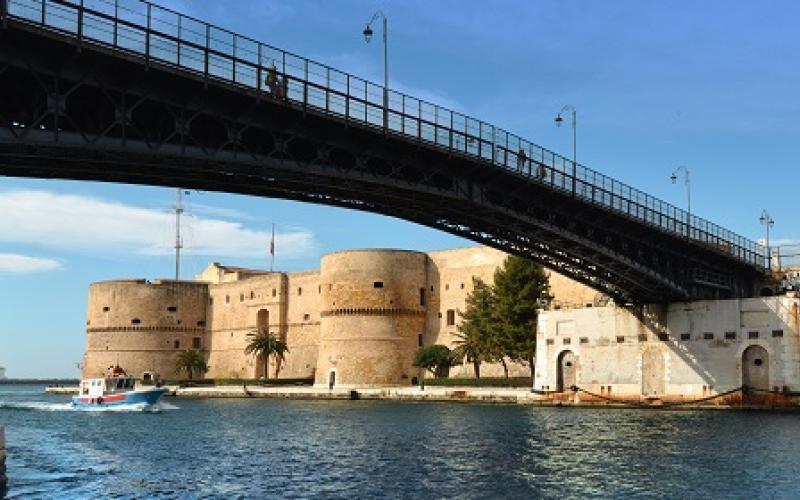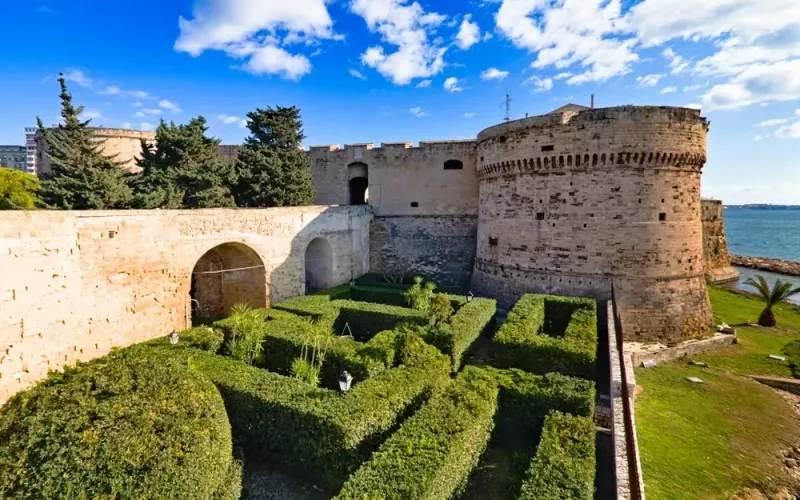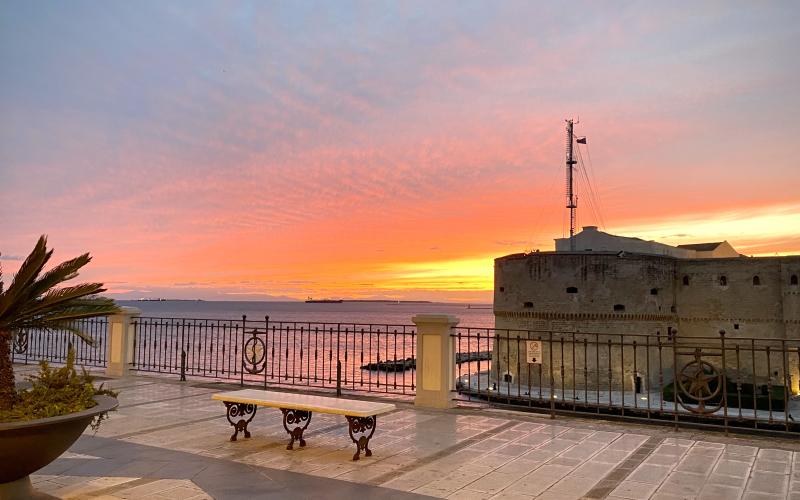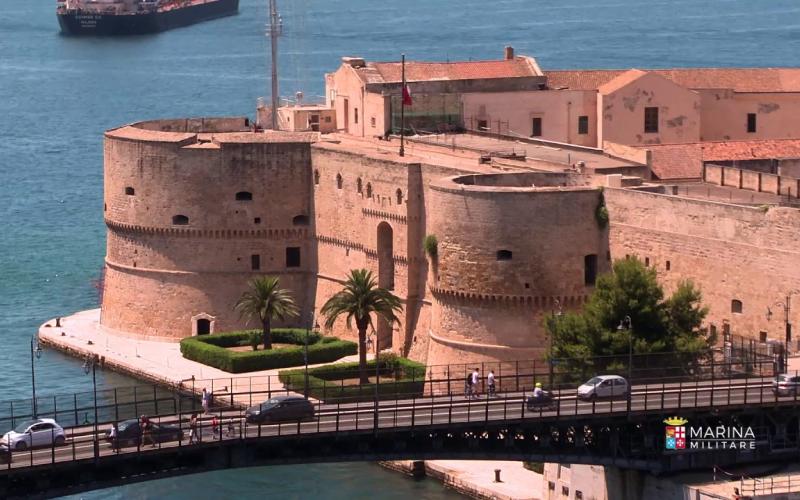The Aragonese Castle of Taranto, also known as Sant'Angelo Castle, is one of the most fascinating architectural and historical icons of Puglia. It stands at the tip of the island of the old town, in a strategic position between the Mar Grande and the Mar Piccolo, guarding the navigable channel that connects the two seas. Today it is one of the most beloved destinations for tourists and history enthusiasts.
A journey through time
The origins of the castle date back to the Byzantine era, but its current structure was built between 1487 and 1492 by order of Ferdinando I of Aragon, king of Naples, as part of a defensive system against Turkish incursions. The work was entrusted to the architect Francesco di Giorgio Martini, who designed a modern fortress for that time, equipped with round bastions capable of withstanding artillery.
Over the centuries, the castle was renovated several times and used for different purposes: military fortress, prison, and strategic outpost of the Italian Navy, which still manages it and has contributed to bringing it back to its splendor through careful restorations.
During excavation works, medieval and Byzantine structures emerged, further enriching the archaeological value of the site. Today, visiting the castle, you can see ancient cisterns, underground tunnels, towers, and perfectly preserved military environments.
The visit
The Aragonese Castle is open to the public every day and offers free guided tours conducted by Navy personnel. The tour winds through internal courtyards, panoramic towers, underground galleries, and historical artifacts. From the clock tower, you can enjoy a splendid view of the drawbridge and the old town.
One of the most fascinating aspects of the visit is the contrast between the solidity of the stone and the transparency of the water surrounding the structure: an immersion in history, as well as in the suggestive landscapes of the city of Taranto.
A living symbol
In addition to being a monument, the castle is also an active cultural center, hosting events, exhibitions, and conferences. Its position at the crossroads between the ancient and the modern makes it a reference point not only historically but also identity-wise for the city.



